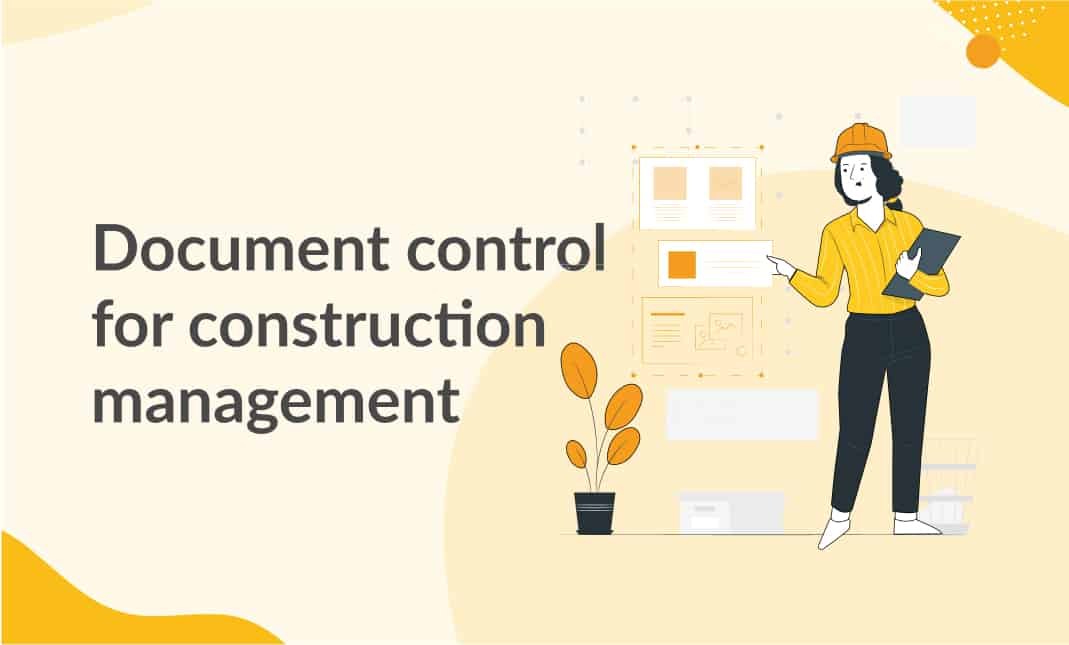Structure Better Projects: The Role of Construction Document Management in Success
Structure Better Projects: The Role of Construction Document Management in Success
Blog Article
Optimizing Project Partnership: Designer's Ideal Practices in Building And Construction Document Management
In the complex realm of architectural projects, the effective management of building and construction files stands as a keystone for success. Designers, with their careful focus to information and innovative layout services, are tasked with coordinating a symphony of timelines, resources, and stakeholders. In the middle of this complexity exists a vital question: just how can designers improve partnership procedures to boost task results? By checking out vital techniques such as leveraging cloud-based systems, developing durable interaction methods, and ensuring information safety, engineers can elevate their paper monitoring methods to new heights.
Leveraging Cloud-Based Systems
By transitioning from standard paper-based systems to cloud remedies, designers can enhance collaboration, enhance paper accessibility, and boost total project effectiveness. This accessibility advertises smooth interaction and coordination among job stakeholders, leading to fewer mistakes and delays in the construction procedure.
In addition, cloud-based systems provide a safe atmosphere for saving delicate project details, supplying encryption, routine back-ups, and individual authorization setups to shield information stability. Architects can likewise benefit from the scalability of cloud remedies, enabling them to adjust storage space ability and performance based upon task requirements. In general, leveraging cloud-based platforms equips designers to enhance their building and construction paper monitoring procedures, driving greater collaboration, performance, and success in their tasks.
Executing Version Control Equipment
Having actually established the benefits of cloud-based platforms in building and construction record management, architects can currently enhance their file control processes by executing Variation Control Equipment. Variation Control Solution (VCS) are necessary devices that track changes in documents, making sure that group participants are always functioning with the most recent and most accurate information. By implementing VCS, architects can preserve a central database where all job records are saved, allowing seamless collaboration while decreasing the danger of mistakes and variation disputes.
This function is particularly valuable in building and construction jobs where layout versions and alterations are common. This transparency not only improves accountability but additionally assists in dealing with conflicts or discrepancies that may arise throughout the task lifecycle.
Developing Interaction Protocols
To make certain efficient and effective project sychronisation, designers have to establish clear and durable communication methods within their building and construction paper administration procedures. Interaction protocols define the techniques, regularity, and networks where group participants exchange information, updates, and comments. One vital facet of developing these protocols is figuring out a central communication platform where all project-related conversations and record sharing can take place. This platform can be a job monitoring software program, e-mail strings, or cloud-based storage options. By setting guidelines on how info is shared and exactly how employee connect with each various other, engineers can improve the circulation of information and avoid miscommunications or hold-ups in the construction procedure.
In addition, communication procedures need to also consist of guidelines on just how read review to take care of disputes, visit this site adjustment orders, and urgent issues that might develop during the project lifecycle. Establishing a structured approach to interaction ensures that all stakeholders get on the exact same page, advertises openness, and eventually adds to the successful conclusion of the building and construction job.
Making Use Of BIM Software for Control
BIM software program plays a crucial function in boosting sychronisation among project team participants in the building sector. Structure Details Modeling (BIM) helps with cooperation by offering a central platform where engineers, engineers, professionals, and other stakeholders can interact in a worked with manner. With BIM software program, project individuals can access and update a shared design which contains in-depth information concerning the structure design, construction parts, and task routines.

Furthermore, BIM software enables real-time partnership and communication among group participants, despite their physical place. Through cloud-based BIM systems, project stakeholders can access the current job details, track changes, and make educated decisions immediately. Overall, leveraging BIM software for coordination boosts task efficiency, efficiency, and ultimately brings about effective task end results.
Ensuring Data Safety and Compliance
In the world of construction document monitoring, guarding information integrity and ensuring regulatory conformity are critical factors to consider for designers and various other project stakeholders. Designers have to apply durable protection actions to safeguard delicate project details from unapproved access or breaches. Using protected cloud storage space options with file encryption methods and gain access to controls can assist mitigate risks connected with data burglary or loss. Consistently upgrading software and systems, conducting security audits, and providing staff training on information protection best practices are necessary action in preserving a safe and secure atmosphere for building file administration.

Final Thought
Finally, architects can enhance project collaboration in building and construction document monitoring by leveraging cloud-based platforms, implementing version control systems, establishing communication procedures, utilizing BIM software program for sychronisation, and guaranteeing data safety and security and compliance. These ideal techniques assist enhance the construction procedure, enhance communication amongst job stakeholders, and improve performance in task shipment. By adhering to these standards, engineers can effectively handle building files and assist in effective project outcomes.
Through BIM software program, task individuals can access and upgrade a shared design that contains in-depth information concerning the building design, building components, and project schedules.
Via cloud-based BIM systems, job stakeholders can access the newest project information, track adjustments, and make notified choices quickly - construction document management. On the whole, leveraging BIM software program for sychronisation enhances job efficiency, performance, and eventually leads to effective task end results
In conclusion, architects can enhance job collaboration in construction record management by leveraging cloud-based platforms, executing variation control systems, establishing interaction protocols, making use of BIM software program for sychronisation, and ensuring information protection and compliance. These best methods aid enhance the construction process, boost interaction among project stakeholders, and boost efficiency in project delivery.
Report this page